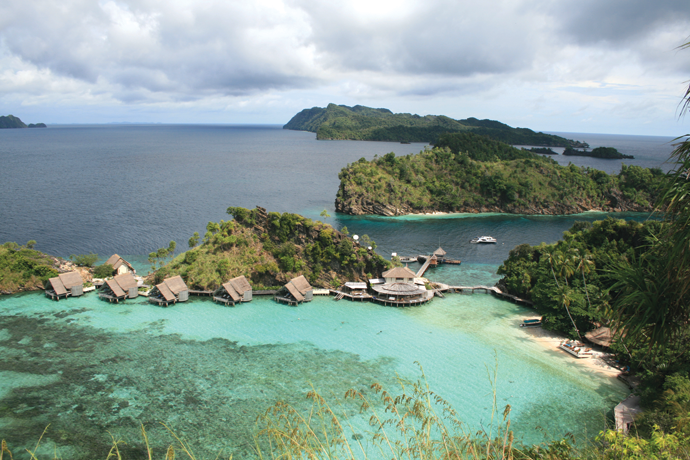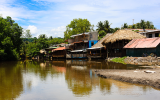- Magazine
- #readityourway
- Weekly Stories
- #shareyourstory
-
Adventure
- Abroad Travelling
- Africa Travelling
- Events
- Expos & Shows
- Festivals
- Fishing
- Free Diving
- Gliding
- Horse Riding
- Inspiring People
- Islands Travelling
- Kite/Windsurfing
- Motorbiking
- Motorised Water Sports
- Mountaineering
- Mountain Biking
- Off-road 4x4
- Off-road Motorbiking
- Paddling
- Performance Driving
- Photography
- Rock Climbing
- Rollerblading
- Sailing
- Scuba Diving
- Skateboarding
- Skydiving
- Snowboarding & Skiing
- Surfing
- Swimming
- Trail Running
- Wakeboarding
- Waveski Surfing
-
Sport
- Adventure Racing
- Fishing
- Free Diving
- Gliding
- Health & Fitness
- Horse Riding
- Inspiring People
- Kite/Windsurfing
- MMA
- Motorbiking
- Mountain Biking
- Multi-sport
- Off-road 4x4
- Off-road Motorbiking
- Paddling
- Performance Driving
- Photography
- Road Cycling
- Road Running
- Rock Climbing
- Rollerblading
- Sailing
- Scuba Diving
- Skateboarding
- Skydiving
- Snowboarding & Skiing
- Surfing
- Swimming
- Rugby
- Trail Running
- Triathlon
- Wakeboarding
- Waveski Surfing
- Lifestyle
- Calendar
Raja Ampat - Southern Mystique of Misool
Words & Photos & Video: Steven Yates
Topic:
Abroad Travelling
Topic:
Scuba Diving
If a more beautiful place than Raja Ampat exists in the world, I have yet to find it. Thousands of lushly covered islands of limestone and coral plunge into the deep blue depths. Lagoon mazes and vast bays are navigated by the calls of many birds, while schooling flying fish gracefully skim the ocean’s surface.

Misool rests nestled in the southern region of a diving Mecca known as Raj Ampat, in West Papua, Indonesia. Departing Sorong, the gateway to this underwater jungle, Laura and I enjoyed a five-hour speedboat trip south through the magnificent archipelago to our luxury eco-resort - the Misool Eco Resort. The journey kindled the spirit of the ocean in me and I yearned for a yacht to ride the winds and explore the uninhabited majesty of the islands and their underwater treasures. Luckily for us, Misool offered us this opportunity, although unfortunately without the freedom of being alone on the ocean and under the power of the wind.
Misool Eco Resort is built entirely from driftwood salvaged from the surrounding area, yet the water cottages, with their open-air showers, ocean-slung hammocks and decadent queen-size beds would make you think otherwise. The wooden walkways over the tidal lagoon provided the perfect vantage point to watch the underwater creatures as they explored the coral. From sea crates to week old blacktip sharks, Misool was a marvel … and we had not even ventured underwater yet.
The first couple of days of diving were a kaleidoscope of colour as we got to experience the world’s most bio-diverse underwater environment. Known for its unbelievably high concentrations of soft corals, southern Raja Ampat was a wonder from 30 m right up to the surface, with the majority of our dives ending with 20 minutes spent exploring the vibrant pink, red and orange soft corals just below the surface. One of our first dives was also a wonderful night dive, where Laura managed to spot one of the very elusive and shy Raja Ampat epaulette sharks. Along with the Raja Ampat pygmy seahorse, this shark is endemic to the region and provided a special tick on the bucket list of strange creatures.
Christmas Eve rolled around and Laura and I decided to take a break from our busy diving schedule of three dives a day and explore the island. The terrain was extremely tough and the vegetation not that conducive to hiking, but we made it to a high point and were rewarded with the most exquisite 360 degree vistas of the southern Raja Ampat islands and her turquoise seas.
Christmas heralded the start of the ‘proper’ diving. We were informed that from Christmas Day onwards, we would be frequenting the very best of Raja Ampat. The morning started better than could ever be expected with a dive on the fabled ‘Magic Mountain’. We dropped into 15 m of water and nearly landed on a lone reef manta ray as it circled the deep ocean pinnacle. Amazed, we watched it slowly glide off into the deep blue. We then made our way along the pinnacle, across a deep saddle and up to a cleaning station at about 22 m. Here, we were intrigued by the rare and difficult-to-spot Raja Ampat pygmy seahorse, only to look up and witness the approach of another four reef mantas. They circled the cleaning station for a good 15 minutes, showing off to the watching crowd of gobsmacked divers. As our time began to run short, we let the slight current pull us slightly off the reef and drift us back towards the main pinnacle. As we began to drift, a dark shape emerged. As the shape took form, the 6 m wingspan of a giant oceanic manta became discernible and the majestic creature graced us with one of the ocean’s most wonderful sightings.
Some of the other dives on Christmas Day and the days that followed were to the reefs known as Boo Window, Fiabacet, Yillet and Nudi Rock. It is near impossible for me to describe the beauty of these sites from the ‘window’ swim through that bisected the island of Boo to the eroded caverns (some only small enough to pop you head into the stale air) accessible only by swimming under the overhanging islands of Yillet. Coral gardens of glowing colours were common place and offered us rare sightings, the likes of harlequin shrimps, ornate ghost pipefish, juvenile sweetlips, massive schools of uncountable anchovies, fusiliers, batfish, travellis and barracuda, all living out the abundant food chain before our very eyes.
Christmas Day ended with a bottle of Veuve Clicquot and yet another sumptuous meal combining Indonesian and Western flavours. The expedition to Raja Ampat’s southern reaches and the Misool Eco Resort ended with a burning desire to return to this underwater paradise and see more of this wonderful world.
dinFO:
• Raja Ampat is also known as ‘the Four Kings’ and relates to the four main islands of Misool, Salawati, Batanta and Waigeo.
• The name Raja Ampat comes from local mythology that tells about a woman who finds seven eggs. Four of the seven eggs hatch and become kings that occupy four of Raja Ampat's biggest islands, whilst the other three become a ghost, a woman and a stone.
• The Raja Ampat archipelago comprises of more than 1,500 islands, including the largest marine national park in Indonesia.
• There are 1,309 fish species, 699 mollusk species and 547 coral species to be found in the Raja Ampat archipelago – this constitutes 75% of all species that exist in the world.
• When travelling to Misool, prepare yourself for a five to six hour boat trip to and from the island. This can be considerably more if there are technical issues with the boats or if the weather is bad.
• Misool Eco Resort is the only island stay in southern Raja Ampat, an area otherwise only accessible by live-a-boards - www.misoolecoresort.com
|
|
|
|
|
|
|
|
|
|
|
|
|
|
|
|
|
Issue:
Issue 25 May '13
Contributor:
Steven Yates
Related content
|
|
|
|
|
|
|
|
|
|











